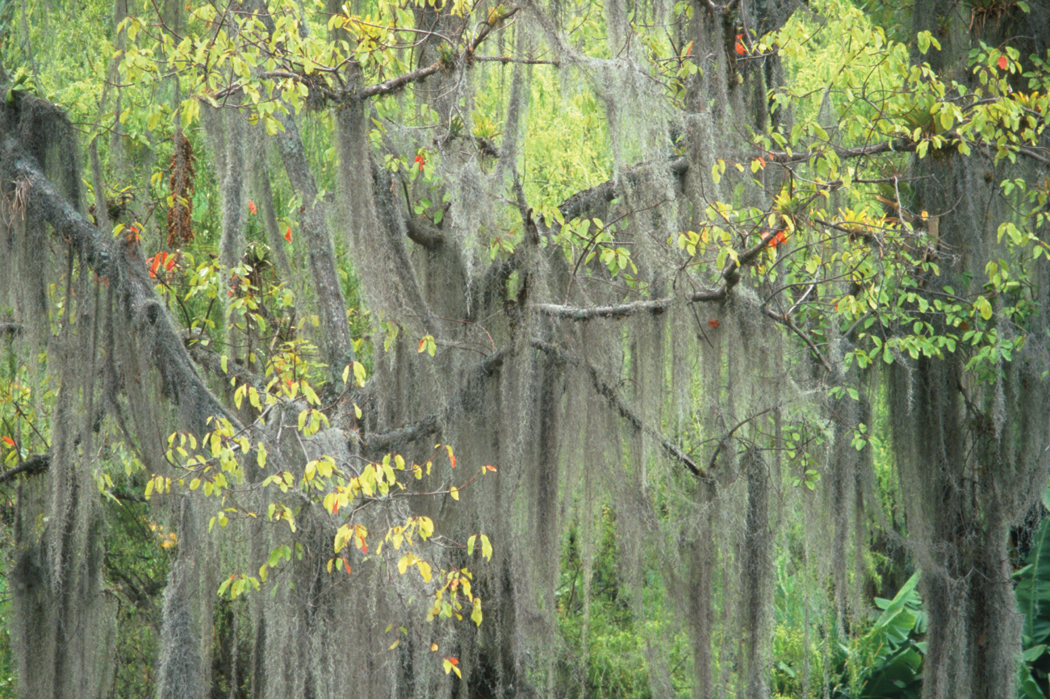Epiphyte << EHP uh fyt >>, also called air plant, is any plant that grows on another plant but makes its own food. Most plants send roots into the soil and use them to obtain the moisture and chemicals they require for growth. But epiphytes take most of the moisture and raw materials they need for food directly from the air or from plant debris that has accumulated around their roots. Epiphytes have no underground roots. Some of them receive moisture from the air through their leaves. Others have fleshy roots that dangle in the air to extract moisture from it.

Epiphytes are not parasitic plants. Parasitic plants fasten themselves to other plants and injure their hosts by feeding on their juices and tissues (see Parasite). But epiphytes may harm the plants they live on if they grow so abundantly as to deprive the host plants of light and air. Some take salts from the decaying bark of the trees upon which they live. Many epiphytes do not require living plants on which to live. They thrive attached to stones, buildings, or timbers.
Some epiphytes are found in temperate (mild) and cold climates, but most grow in tropical forests. Temperate epiphytes include such small, inconspicuous plants as certain mosses and liverworts. Spanish moss is a well-known epiphyte of the southern United States. The largest and most beautiful of the epiphytes live in tropical rain forests. The most common epiphytes include orchids, aroids, bromeliads, and ferns. These plants may grow on any part of a tree but survive best on the trunk, in forks of limbs, and on large branches.
